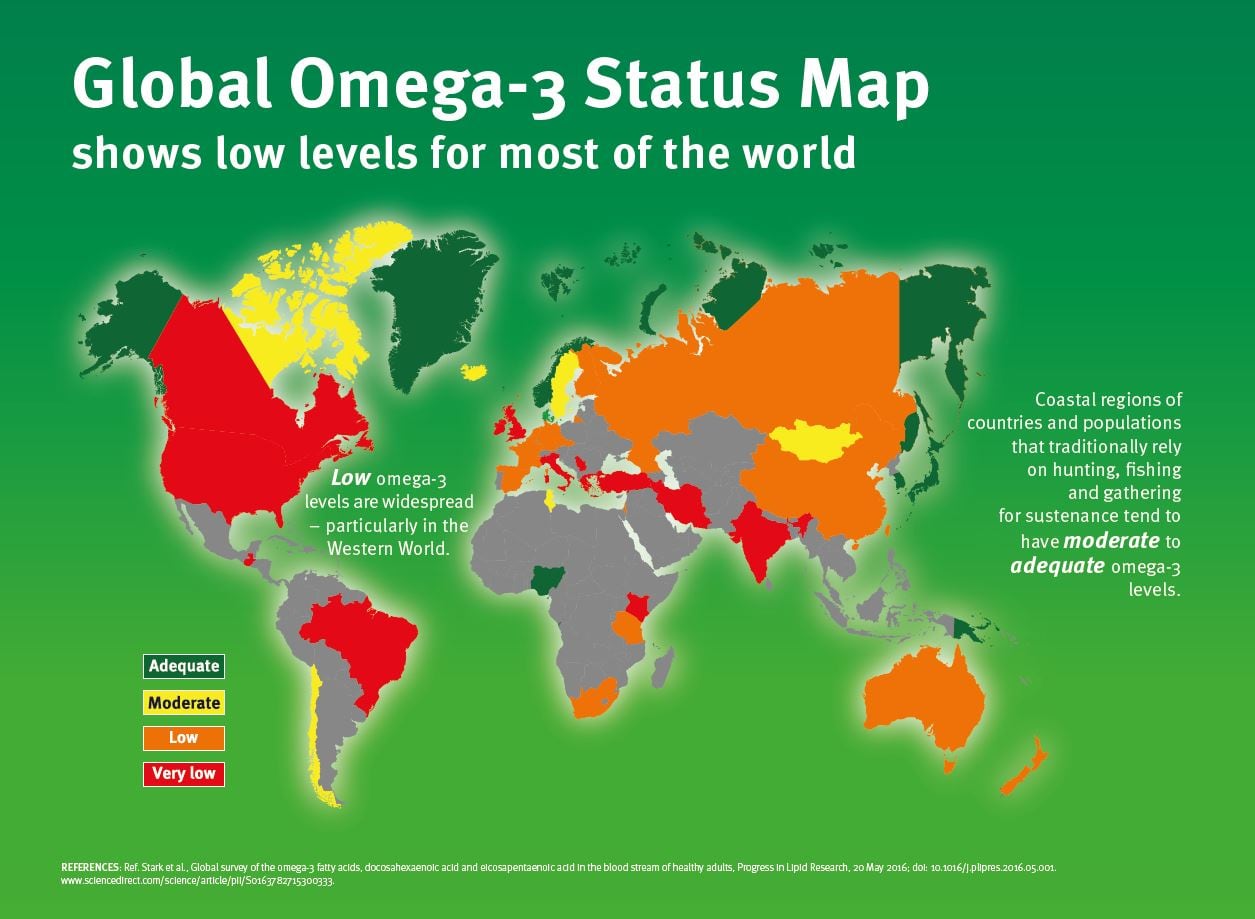It is hoped findings could prompt new guidelines and recommendations from local, national and regional health authorities.
The map – funded by DSM – is based on a review of 298 studies. The analysis showed low to very low omega-3 polyunsaturated fatty acids (PUFAs) levels in most regions of the world, especially for omega-3 forms eicosapentaenoic acid (EPA) and docosahexaenoic acid (DHA).
Omega-3 deficiencies have been linked with increased risk of cardiovascular disease, cancer and diabetes along with cognitive and vision retardation.
The review is being shared with relevant consumer associations which promote research – such as cardiovascular and cognitive health – where omega-3 could be beneficial against risk factors, Dr Manfred Eggersdorfer, senior VP in nutrition science and advocacy at DSM, told us.
It is hoped the map will support these groups in interactions with national bodies, he said.
“We believe there is a strong case for health authorities to issue recommendations relating to omega-3 and a reduction in the risk of experiencing cardiovascular disease and cognitive decline, alongside other guidance such as the importance of a healthy diet and increased physical activity,” he added.

Beside public health impacts, Dr Eggersdorfer referred to a recent study which suggested regular consumption of omega-3 supplements in the range of 1,000 mg/day would save €12.9 billion a year in cardiovascular disease-related healthcare costs in the EU alone.
It is necessary to consume significantly more than 250 mg of omega-3 fatty acids per day in order to achieve health benefits, he said.
“The optimal level can be reached by eating fatty fish rich in omega-3, like salmon or cod, several times a week. As modern eating habits mean that many people do not follow this diet, food supplements and fortified foods are the most convenient and cost effective ways to ensure that the optimal level is achieved.”

Regions at risk
Regions with very low EPA and DHA blood levels include all of the Americas, central and southern Europe, the Middle East, south east Asia and Africa.
“Low omega-3 levels are particularly widespread in the western world and this may reflect dietary habits or consumer attitudes to supplementation,” Dr Eggersdorfer noted.
The trend is partly a result of processed foods which have altered the ratio of omega-3 to omega-6 in our diets, Laura Jones, global food science analyst at Mintel told NutraIngredients.

Though consumer awareness of omega-3 as a beneficial supplement is high, Jones said Mintel data suggests they are not necessarily aware of its exact health benefits.
It is hoped the map will raise awareness among both consumers and industry of the high proportion of healthy adult populations who do not have an adequate EPA and DHA status.
The findings may prompt academia to conduct more research into omega-3 effects and intakes, even though the existing body of research is one of the largest in contemporary nutrition science.
“Although it represents an important contribution, this review is just one of more than 30,000 published scientific papers related to omega-3 fatty acids,” he said.
